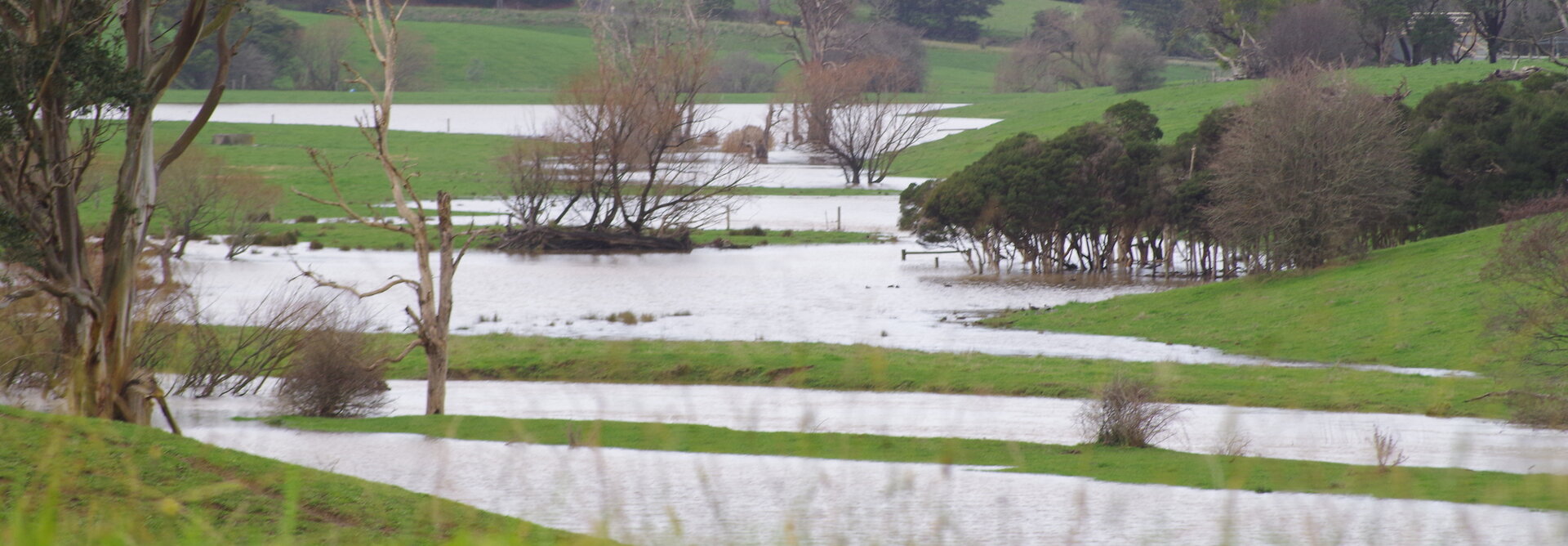One of the really rewarding things about revegetation (or protecting remnant vegetation) is the way that the plants keep working for us ever after – growing bigger, sequestering green house gases, safe guarding water quality, enriching and stabilising soils, providing food and shelter for wild life, setting seed and growing suckers and regenerating, competing with weeds, and enhancing the environment with sights, sounds and smells to delight us.
These rewards are complemented with weed control. There is the satisfaction of knowing that, each year a weed is prevented from reproducing, pest seed reserves are reduced and the balance is tipped increasingly toward the native vegetation we do want. It’s the same principle as establishing a healthy sward of pasture.
Luke and Melissa are thrilled with the WGCMA’s work to remove willow and ash trees from their river banks. This has cleared the way for a restoration program which will involve revegetation whilst preventing weed regrowth. Similarly, we have been heartened by Regional Roads Victoria’s destruction of thickets of Cape Broom which grew over the cliffs either side of the South Gippsland Highway down to the Tarwin River. Our “100 acres” of public land in the Black Spur Creek Wetland landcare project has been long neglected and rail trail users and adjoining landholders have been especially concerned about ragwort and blackberry this year. We expect that improved management of our stretch of rail trail and the 8.7 Ha vegetation offset (including the wetland) will be initiated by the MRPA in coming months.
In January the South Gippsland Highway realignment project gained approval under the EPBC Act. A contract for the realignment project should be awarded in mid-2019 with work commencing toward the end of the year. Salvaging of cultural heritage items continues.
The Landcare group’s first two bird monitoring walks have proven to be a very pleasant way to appreciate the environment, learn more about birds, and catch up with each other. We meet at 5pm at the Recreation Reserve on the third Tuesday of each month. With support from the Great Southern Rail Trail Committee, we have applied to the Wettenhall Environment Trust to enable us to erect a sign to encourage participation by all interested rail trail users.
We’ve also had sightings of Short-Finned Eel (Southern Conger, Conger vereauxi). It’s interesting to read about them on the Victorian Fisheries Authority website. They are nocturnal predators that shelter in crevices during the day and have a home range of about 400m. They stay in fresh water for up 14 years and then, when sexually mature, migrate downstream to the ocean and onward to the Coral Sea where they spawn and then die. The tiny transparent larvae rely on strong currents to drift back towards the Victorian coast. By this time they are small “glass eels” and are attracted to estuaries by detection of fresh water. In mid-winter to early spring they move inland into rivers, creeks, lakes and swamps. When river flows are low or closed, or currents weakened, there is no eel recruitment.
Kate Walsh, Coordinator, Black Spur Creek Wetland Project, for Nerrena/Tarwin Valley Landcare Group. walshpk@gmail.com.
Phone 0409 418 223.

